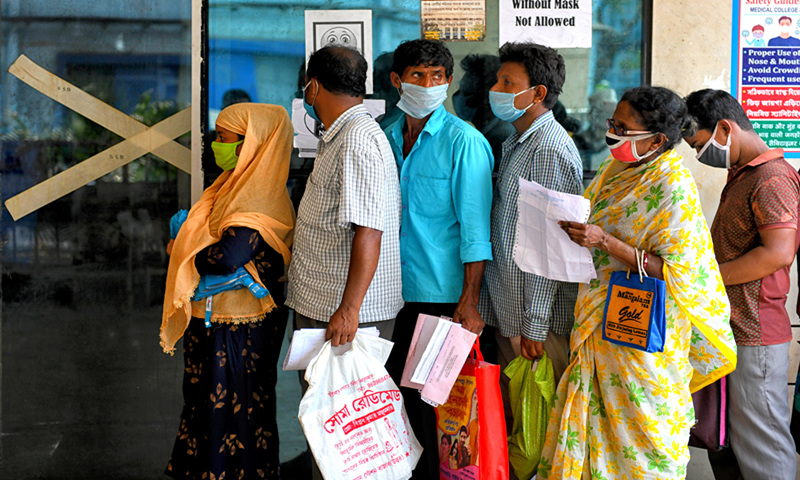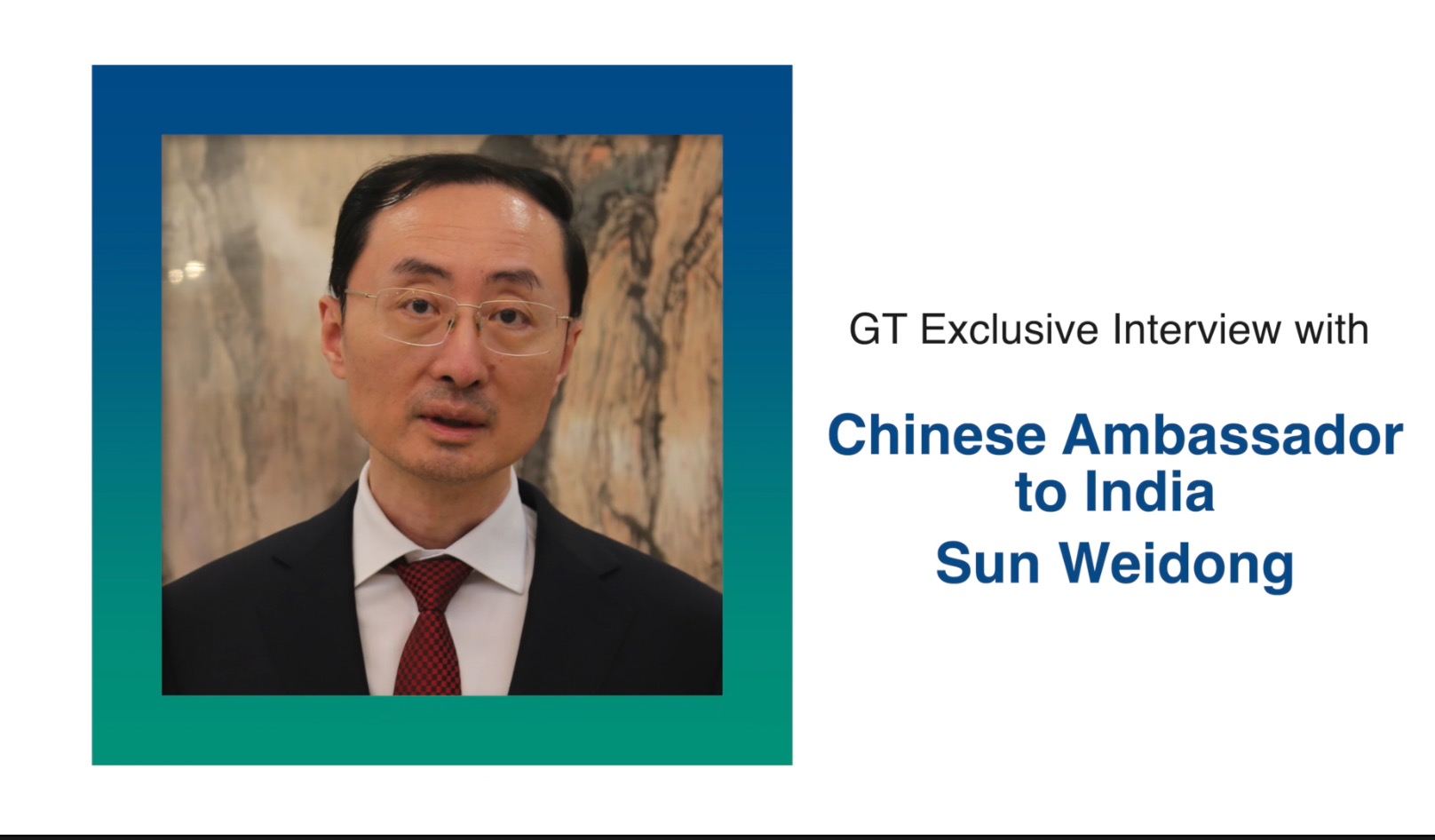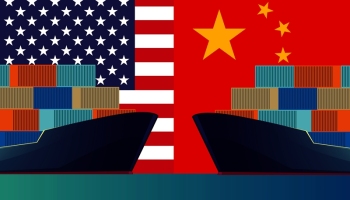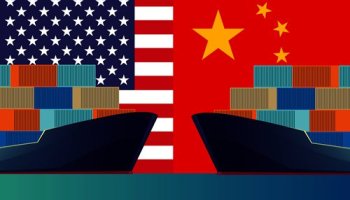Trump cutbacks force scientists to increasingly seek jobs in Europe
Student workers of Columbia union members protest Columbia University's recent policy changes and call for protection of international students, restoration of funding, and academic freedom at Columbia University in New York City, US, on March 24, 2025. Photo: ICDavid Die Dejean is passionate about studying tuna. Last year, he landed a dream job at National Oceanic and Atmospheric Administration in Miami to pursue his research.
By January, he was settled in, had received a good review and loved working with his colleagues, he said.
Then in mid-february he received an email to vacate the premises within 90 minutes. He and hundreds others had been dismissed in job cuts targeting probationary workers as US President Donald Trump’s new administration began slashing funding for universities and research bodies.
Now Die Dejean is applying for positions in Europe.
“I want to work wherever they allow me to do the research,” said the scientist, who studies fish stocks to ensure tuna is being fished sustainably.
“I’m eagerly waiting for some of the things that are coming from the European Union... increasing the opportunities for scientists like me to come back,” said Die Dejean, who was born in Spain but has spent most of his career in the United States and Australia.
Trump’s administration says billions of dollars in cuts are needed to curb the federal deficit and bring the US debt under control.
His cutbacks on research come amid a broader clash that has seen Trump criticise universities as discriminatory for their diversity policies and denounce what he sees as a failure by some institutions to protect Jewish students from antisemitism.
The threat to academics’ livelihoods at universities including Yale, Columbia and Johns Hopkins has given Europe’s political leaders hope they could reap an intellectual windfall.
A letter, reviewed by Reuters, signed in March by 13 European countries including France, Germany and Spain, urged the EU Commission to move fast to attract academic talent.
The European Research Council, an EU body that finances scientific work, told Reuters it would double the relocation budget for funding researchers moving to the EU to €2mil (Rm10mil) per applicant. That goes towards covering the cost of moving to a European institution, which may involve setting up a laboratory.
In Germany, as part of coalition talks for a new government, conservatives and Social Democrats have drawn up plans to lure up to 1,000 researchers, according to negotiation documents from March seen by Reuters that allude to the upheaval in US higher learning.
Reuters spoke to 13 European universities and research institutes that reported seeing an increase in Us-based employees considering crossing the Atlantic, as well as half a dozen Us-based academics pondering a move to Europe.
“Regulatory uncertainty, funding cuts, immigration restrictions, and diminished international collaboration create a perfect storm for brain drain,” said Gray Mcdowell of US digital consultancy firm Capgemini Invent.
A White House official said the administration is analysing research grants and prioritising funding for areas likely to deliver returns for taxpayers “or some sort of meaningful scientific advancement”. The NOAA cuts were designed to avoid compromising its ability to do its duties, the official added.
Pulling in US talent to Europe requires more than good will though. It requires money.
For decades, Europe has lagged far behind the United States on investment in its seats of higher learning. Total expenditure on research and development in the EU among businesses, governments, universities and private non-profit organisations in 2023 was €381bil, according to the latest figures by Eurostat – the statistical office of the European Union.
That same year, total research and experimental development in the United States was estimated at Us$940bil, according to the National Center for Science and Engineering Statistics, a federal agency that provides data on the performance of science and engineering in the United States.
And while the US’S richest university, Harvard, has an endowment worth Us$53.2bil that of Britain’s wealthiest, Oxford, is only £8.3bil.
One academic and an expert in academia said, even with a concerted and substantial effort, Europe would likely need a long time to overturn that spending advantage.
The White House official said even with the cuts, the United States would still account for the most global research funding, adding: “Europe is not going to and cannot fill the void.”
Dozens of scientists have taken to social media encouraging peers to stay in the United States, while others acknowledge a number of drawbacks may deter them from moving.
Michael Olesen, director of an infection prevention programme for a healthcare system in Washington, said language barriers were one potential drawback, as were unfamiliar laws and employment practices.
Salary is another. “My impression is that I would get paid a lot less as an anaesthesiologist in Europe,” said Holden K. Groves, an Assistant Professor of Anaesthesiology at Columbia University, which received funding from the National Institutes of Health (NIH). “It’s a huge ordeal to change.”
Still, Europe’s political leaders feel the stance of the Trump administration has put the wind in their sails.
“The American government is currently using brute force against the universities in the United States, so that researchers from America are now contacting Europe,” Germany’s chancellor-in-waiting, Friedrich Merz, said this month.
“This is a huge opportunity for us.” John Tuthill, a American neuroscience professor at the University of Washington in Seattle, is assessing his options.
He cannot apply for new funding to plan beyond 2027 because grant applications have now been frozen.
The lab of 17 people he runs gets about three-quarters of its funding from the NIH, where the Trump administration has earmarked major cuts.
“Europe is the obvious one, because it is the other hub of biomedical research in the world,” said Tuthill, adding he is weighing up a move with his wife and daughter.
Aix Marseille University in France said it had received interest from 120 researchers at institutions in the United States, including NASA and Stanford, for a €15mil “safe space for science” programme launched on March 7. The initiative aims to attract US staff from fields including health, LGBT+ medicine, epidemiology and climate change.
“Our colleagues were frightened... It was our duty to rise to the occasion,” university director Eric Berton said, noting 10 European universities have contacted him about launching similar programmes.
In the Netherlands, the government wants to establish a fund to attract top foreign scientists and bolster the EU’S ‘strategic autonomy’ aims, Education Minister Eppo Bruins said in a letter.
That marks a policy shift as the government had previously announced plans to cut half a billion euros in research and higher education.
Eindhoven Tech University President Robert-jan Smits told Reuters that bringing in US scientists could boost Europe’s technological sovereignty in areas like semiconductors.
Belgium’s sister universities Vrije Universiteit Brussel and Universite Libre de Bruxelles have launched a scheme encouraging Us-based researchers to apply for 36 postdoctoral positions. And the Alexander von Humboldt Foundation, which promotes the exchange of top scientists to Germany, plans to increase its programmes by about 20%.
The Grantham Institute at Imperial College London, which specialises in climate change research, is creating at least two more research fellowship posts for early-career climate researchers from the United States and has already seen an clear uptick in applications, said its Director of Research, Joeri Rogelj..- Reuters
America First,' science on the sidelines?: US-China ...

Student workers of Columbia union members protest Columbia University's recent policy changes and call for protection of international students, restoration of funding, and academic freedom at Columbia University in New York City, US, on March 24, 2025. Photo: IC
Editor's Note:
In recent years, the US has faced unprecedented challenges to its ability to attract top global talent. The "brain drain" in the field of scientific research has been frequently discussed in the media and academia, especially under the current US administration's "America First" policy. The Global Times brings together three experts from China, the US and Europe to discuss how Washington's policy is driving away scientists and its impact on the US' research ecosystem, global talent mobility as well as the future of the global competition in scientific research.
Anthony Moretti, associate professor at the Department of Communication and Organizational Leadership at Robert Morris University
History reminds us that one reason to account for America's prestigious position in areas such as science is that it consistently opened its arms to researchers across the world. Likewise, immigration policies that welcomed such scholars ensured that the US benefited from intellectual firepower whether it was created at home or brought in from elsewhere. Now, America risks suffering from brain drain.
How is it possible that the US, the mythical land of the free, is now a place some scholars want to flee?
Through its insistence that too many colleges and universities are dedicated to "woke" policies and practices and its equally corrosive threats to take away critical grant money, the administration is making it harder and harder for researchers at America's most exceptional institutions to do their jobs. Those with the scholarship or research records that allow them to consider non-US universities are looking elsewhere. Why risk watching decades of work be destroyed?
Many scholars look at the federal government's determination to deport foreign-born graduate students and cannot help but wonder if faculty will be next. Granted, the courts might step in and make it harder for the government to kick international graduate students out of the country. But who could blame a foreign-born researcher for thinking that the courts could decide instead to endorse the president's plans? Why risk deportation?
Do enough people in Washington, and more specifically at the White House, understand the ramifications of losing some of the most intelligent people currently living in the country? US citizens are often told that their country's freedoms explain why millions of people, including the most educated, from across the globe want to live and work in America. That story now rings hollow. Over the past few decades, the US built the largest innovation engine the world has ever seen, but that engine risks short-circuiting.
Li Zheng, research fellow at the Institute of American Studies, China Institutes of Contemporary International Relations
In the post-World War II era, the US built an unrivaled innovation system with its open policies and abundant funding, attracting top talents from around the world. However, this long-standing position is being challenged as recent "America First" policies have created obstacles to continued progress.
For a long time, the US innovation system has been highly dependent on government strategic guidance, diverse teams and overseas scientists. The government has guided the scientific research system through many organizations, such as the National Institutes of Health (NIH) and the National Science Foundation, to explore the best path. The relative transcendence and independence of scientific research institutions also allow scientists to focus their own research areas and make freer choices. Besides, foreign scientists have been the mainstay of the US innovation system, allowing it to continue to gather the world's best talents.
However, the current US administration's science policy has brought harm to the US science, technology and innovation system in three ways. First, research and development funding has shrunk dramatically, with many scientific research organizations being the focus of budget cuts and layoffs. Second, the research climate in the country has been politicized. Third, the US has become more inward-looking and xenophobic in terms of scientific and technological exchanges.
Together, these have put the US science, technology and innovation system at risk of a historic setback. As the US risks losing its researchers more and more, the world isn't stopping. Europe and Canada are welcoming US scientists who want to run away from the country with open arms. Thirteen European governments asked the EU to welcome "brilliant talents from abroad who might suffer from research interference and ill-motivated and brutal funding cuts," while Canada has already become the destination for US scientists who have been laid off and are considering running away. Washington's decision to move against the science and technological development has also given more Asian countries a chance to catch up. China, South Korea and Singapore are investing more in R&D and building world-class research infrastructures. These countries may replace the US as a pole of global science and technology innovation in the future.
Sebastian Contin Trillo-Figueroa, a geopolitics analyst from Spain with a specialization in EU-Asia relations
The Trump administration's policies toward science have researchers witness a core civil right vanishing at speed. As a result, many conclude their work is at risk; and that they could pursue it more freely elsewhere.
Yet it's important to recognize that US researchers remain the best-paid in the world, with access to unmatched research funding. Their decision to leave, despite such advantages, underscores the scale of discontent.
This could have a severe negative effect on the US' scientific and tech development and innovation. First, US scientific leadership is now exposed to internal political turbulence in a way not seen before. Second, allies may begin to sever their reliance on US-based research, while the erosion of institutions like NIH weakens US influence in global science diplomacy. Third, the US may serve as a cautionary tale, demonstrating how easy it is to lose global talent, rather than attract it.
The deeper concern for the US may not be technological decline alone, but a fracture between national identity and its scientific community. Researchers, like many immigrants today, may come to believe the so-called American Dream no longer exists.
The outflow of US-based scientists redistributes knowledge and dilutes American dominance over global research. However, the loss of disillusioned US-based scientists is a net gain elsewhere. The weakening of US research leadership opens space for Europe and Asia to expand their scientific influence. Europe is well-positioned to absorb this shift, drawing on institutional infrastructure, transnational networks, and appeal as a space offering welfare protection and a high quality of life.
While Europe may lead in regulation-intensive fields, Asia - driven by China, India and regional innovation hubs - can pursue development-focused models anchored in long-term planning and state-backed research. China, in particular, may use the opening to advance its own scientific models, supported by large-scale investments and increasingly competitive conditions for high-skilled migrants. If China capitalizes on this exodus, it could absorb much of this talent - and, in doing so, tilt global scientific leadership.
The influx of US-trained scientists becomes not only a boost to research excellence, but a lever for reordering global hierarchies of expertise. Institutional responses across Europe and Asia should be strategic. Talent absorption feeds national innovation strategies and enhances soft power. For instance, China may scale up various initiatives with greater flexibility, aiming to capture expertise while managing reputational risks.






















